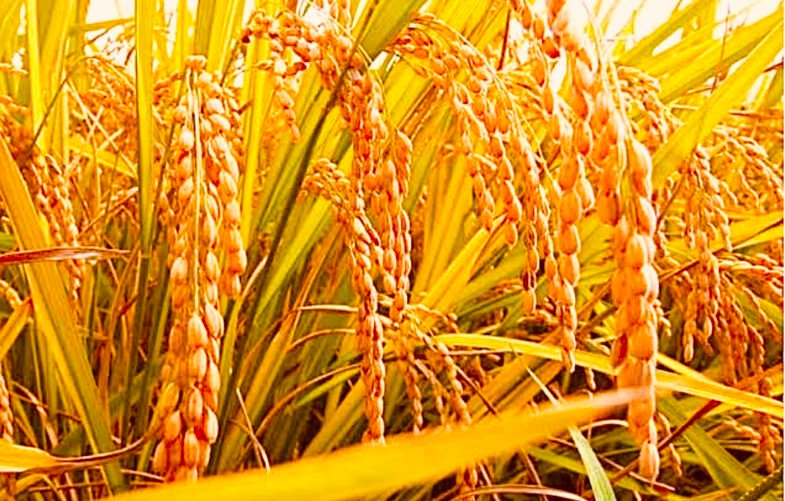Technologies like improved storage facilities, and value-added processing techniques help reduce post-harvest losses, improve grain quality, and enhance marketability.

Agriculture faces several challenges that can impact food production, rural livelihoods, and global food security.
Here are some of the key challenges in agriculture:
Climate Change:
Agriculture is highly sensitive to climate variability and change. Rising temperatures, irregular rainfall patterns, increased frequency of extreme weather events, and changing pest and disease dynamics pose significant challenges to crop and livestock productivity. Adaptation strategies and resilient farming practices are essential to mitigating the impact of climate change on agriculture.
Water Scarcity:
Water scarcity is one of significant challenges in many regions, as agriculture accounts for a substantial portion of global water usage. Competition for water resources between agriculture, industry, and domestic needs is intensifying. Sustainable water management practices, such as precision irrigation and water-use efficiency, are crucial to ensure agricultural productivity while conserving water resources.
Land Degradation:
Soil erosion, nutrient depletion, desertification, and deforestation contribute to land degradation, reducing arable land and agricultural productivity. Unsustainable land management practices, including overuse of chemical fertilizers and pesticides, further exacerbate these issues. Implementing sustainable land management practices, such as conservation agriculture and agroforestry, can help combat land degradation.
Loss of Biodiversity:
Agricultural intensification has led to the loss of biodiversity on farms. Monocropping, genetic homogeneity, and excessive use of agrochemicals contribute to the decline of pollinators, beneficial insects, and other wildlife. Preserving and enhancing biodiversity through measures like crop diversification, habitat restoration, and integrated pest management are essential for sustainable agriculture.
Food Security and Hunger:
Despite significant progress in reducing global hunger, millions of people still suffer from food insecurity. Unequal access to resources, limited market access for small-scale farmers, post-harvest losses, and inadequate infrastructure contribute to food insecurity.
Strengthening rural livelihoods, improving market linkages, enhancing storage and transportation facilities, and supporting smallholder farmers are crucial for achieving food security.
Technological Gap:
Many small-scale farmers in developing countries lack access to modern agricultural technologies and information. The digital divide, limited infrastructure, and inadequate extension services hinder the adoption of innovative farming practises. Bridging the technological gap and promoting inclusive access to information, training, and appropriate technologies can help improve agricultural productivity and efficiency.
Urbanization and Changing Demographics:
Rapid urbanisation leads to the conversion of agricultural land into urban areas, reducing the availability of fertile land for farming. Additionally, an ageing farming population and the migration of rural youth to cities pose challenges to maintaining agriculture productivity and knowledge transfer.
Encouraging sustainable urban planning, providing support to young farmers, and promoting rural development initiatives are crucial to addressing these challenges.
Global Trade and Market Volatility:
Agricultural markets are subject to price volatility, influenced by global trade policies, currency fluctuations, and supply-demand imbalances. Small-scale farmers often face challenges in accessing fair markets, price information, and value chains. Strengthening market infrastructure, ensuring fair trade practices, and providing market-related support to farmers can help mitigate these challenges.
Addressing these challenges requires a multi-dimensional approach involving sustainable farming practices, policy support, technological innovation, capacity building, and international cooperation. By promoting sustainable and resilient agriculture, it becomes possible to ensure food security, improve rural livelihoods, and mitigate the environmental impact of agricultural activities.
Let us explore this to better understand how technology is changing our global agricultural output through an example. Modern rice farming technology encompasses various advancements and practices aimed at increasing productivity, efficiency, and sustainability in rice cultivation. Here are some notable examples:
Improved seed varieties:
Modern rice farming relies on high-yielding and disease-resistant seed varieties. These varieties are developed through conventional breeding techniques or genetic engineering, resulting in improved traits such as higher yields, resistance to pests and diseases, and tolerance to environmental stress.
Precision agriculture:
Precision agriculture techniques, such as remote sensing, drones, and satellite imagery, are used to gather data about soil conditions, crop health, and water management. This information helps farmers make informed decisions regarding fertilizer application, irrigation scheduling, and pest/disease control, leading to optimized resource utilization and increased yields.
Mechanization:
Mechanization has revolutionized rice farming, reducing labor requirements and improving efficiency. Farm machinery like tractors, transplanters, harvesters, and threshers automate various tasks, including land preparation, seeding, transplanting, harvesting, and post-harvest processing.
Water management:
Efficient water management is crucial in rice farming, as the crop requires a substantial amount of water. Modern technologies like drip irrigation, laser leveling, and alternate wetting and drying (AWD) methods help minimize water usage, prevent waterlogging, and reduce the overall environmental impact of rice cultivation.
Integrated pest management (IPM):
IPM practices involve the use of various techniques to control pests and diseases effectively while minimizing the use of chemical pesticides. This approach combines methods like biological control (use of natural enemies), cultural practices, resistant varieties, and monitoring systems to ensure sustainable pest management.
Nutrient management:
Balanced nutrient application is essential for optimal rice growth and yield. Modern technologies, including soil testing, site-specific nutrient management, and foliar fertilization, enable farmers to precisely determine and supply the required nutrients at different growth stages. This approach minimizes nutrient loss, reduces environmental pollution, and maximizes fertilizer efficiency.
Data-driven decision-making:
Farmers can benefit from digital platforms and mobile applications that provide real-time information and advisory services. These tools offer weather forecasts, pest and disease alerts, market prices, and agronomic recommendations, enabling farmers to make data-driven decisions and adopt best practices for improved outcomes.
Post-harvest technologies:
Modern rice farming also includes innovations in post-harvest handling and processing. Technologies like mechanical dryers, improved storage facilities, and value-added processing techniques help reduce post-harvest losses, improve grain quality, and enhance marketability.
Overall, modern rice farming technology focuses on increasing productivity, conserving resources, minimizing environmental impact, and improving farmers’ livelihoods through the adoption of innovative tools and practices.
